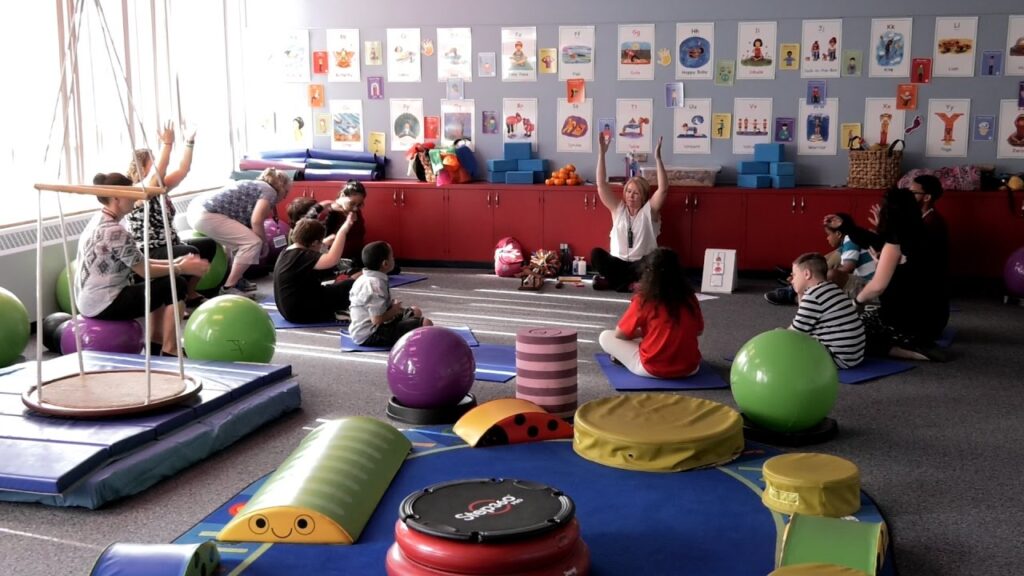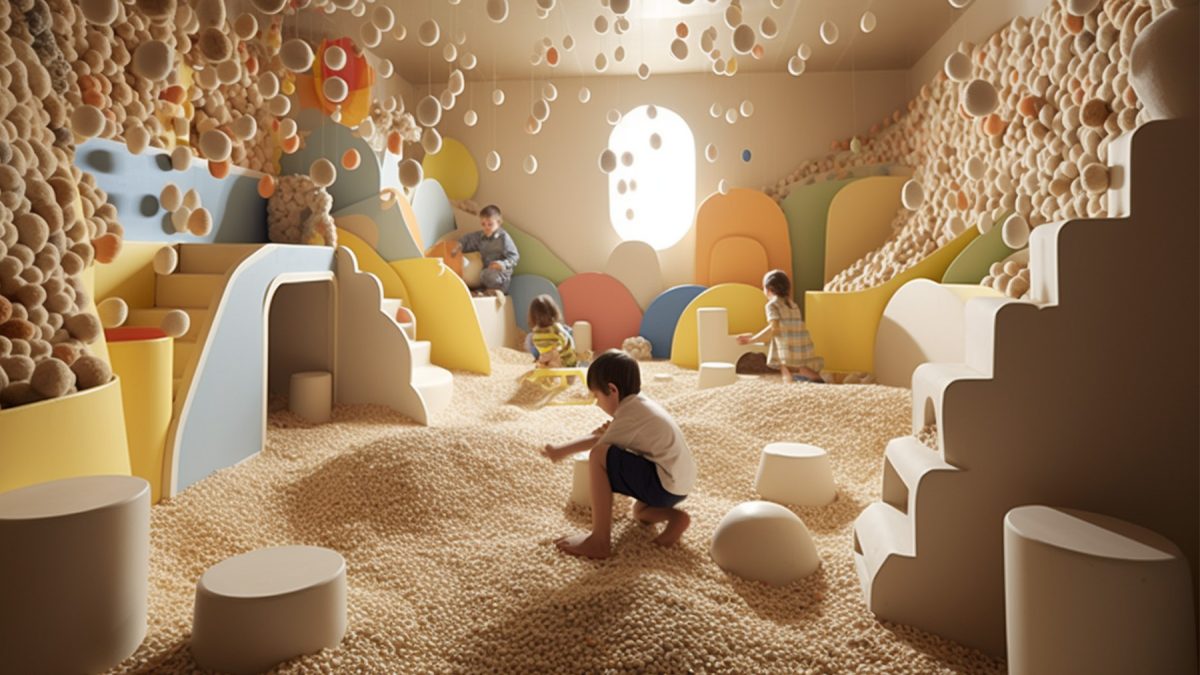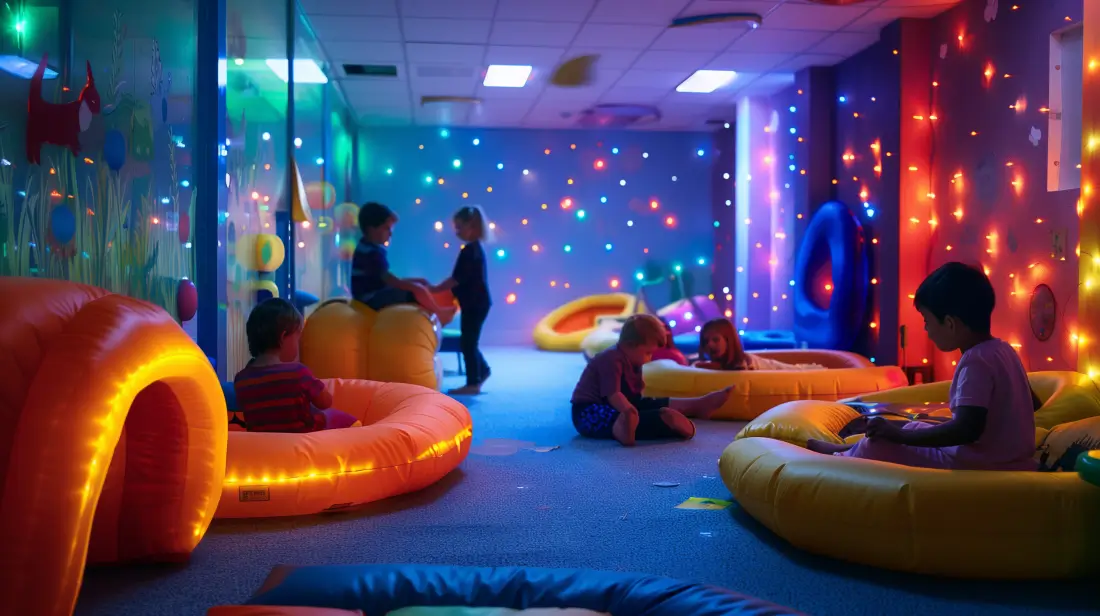Every student learns differently. While some students enjoy reading textbooks and solving questions on paper, others need a more hands-on or creative approach. For students who face challenges like anxiety, hyperactivity, or sensory processing issues, learning in a traditional classroom can be overwhelming. This is where Sensory Rooms Education makes a big difference.
Sensory rooms are carefully designed spaces that use lights, sounds, textures, and activities to help students feel calm and focused. These rooms are becoming a popular part of schools worldwide because they help children learn better and feel supported. In this article, we at Verified Campus will explain the benefits of Sensory Rooms Education, how they work, and why they are so important for student success.
What is Sensory Rooms Education?
Sensory Rooms Education is an innovative way of teaching and supporting students by using sensory rooms. These rooms are equipped with tools and activities that stimulate a student’s senses—sight, sound, touch, smell, and even movement. They are safe spaces where students can relax, manage their emotions, and focus better.
For example, a sensory room might have soft lights, bean bags, textured walls, swings, and calming music. When students feel overwhelmed in class, spending a few minutes in the sensory room can help them return with a clear mind.
Why are Sensory Rooms Important in Schools?
Traditional classrooms can be noisy and distracting. Students with sensory processing difficulties may feel frustrated and unable to concentrate. Sensory Rooms Education helps in creating a balance by providing an environment where students can reset and regulate their emotions.
Here are some reasons why these rooms are so effective:
-
Helps students relax: Sensory rooms provide a calming environment for students who feel anxious or restless.
-
Improves focus: Students return to class more focused and ready to learn after spending time in a sensory room.
-
Supports special needs students: Children with autism, ADHD, or other conditions benefit greatly from these rooms.
-
Encourages positive behaviour: Students learn to manage their emotions better, which reduces classroom disruptions.
Key Features of Sensory Rooms Education
Sensory Rooms Education is about creating the right space for each student’s needs. Some of the common features include:
1. Visual Stimulation: Calming lights, bubble tubes, and colourful images help students relax and engage their sense of sight.
2. Sound and Music: Soft background music or gentle nature sounds can create a peaceful environment.
3. Tactile Activities: Students can touch textured walls, play with soft toys, or use sand and water trays. These activities engage their sense of touch.
4. Movement Activities: Swings, balance boards, or small trampolines help students who need to move around to feel comfortable.
5. Safe and Comfortable Space: Sensory rooms are designed to be safe. Soft furnishings and clear layouts make them ideal for students of all ages.
Benefits of Sensory Rooms Education for Students
The benefits of Sensory Rooms Education go far beyond just calming students. These rooms help in the overall development of a child’s learning abilities and emotional health.
1. Reduces Stress and Anxiety
Students often face pressure from exams, homework, and social situations. Spending time in a sensory room helps reduce stress and clear their minds.
2. Improves Emotional Regulation
Students learn how to control their emotions better. This makes it easier for them to participate in class without outbursts or frustration.
3. Builds Social Skills
Sensory rooms can be used for group activities. This allows students to interact with their classmates in a safe and friendly environment.
4. Encourages Independence
When students know they can use the sensory room to calm themselves, they become more independent and responsible for their emotions.
5. Enhances Learning Abilities
A calm and focused mind learns better. Students who use sensory rooms often show improvement in academic performance.
How Teachers Can Use Sensory Rooms Education
Teachers play a big role in making Sensory Rooms Education successful. They can:
-
Schedule regular visits: Plan short breaks in the sensory room for students who need them.
-
Integrate activities with lessons: Use sensory activities to make difficult subjects easier.
-
Observe student needs: Each student is different. Teachers should adjust activities based on what works best for the child.
-
Encourage self-regulation: Teach students to identify when they need a break and how to use the sensory room effectively.
Sensory Rooms Education for Students with Special Needs
Students with autism, ADHD, dyslexia, and other learning differences find Sensory Rooms Education especially helpful. The calming environment helps them focus better and reduces the frustration they may feel in a traditional classroom.
For example:
-
Students with autism may enjoy soft lights and predictable sounds.
-
Students with ADHD may benefit from movement-based activities like swings or balance boards.
-
Students who feel anxious can use breathing exercises or guided meditation in the sensory room.
Real-Life Examples
Schools that have implemented Sensory Rooms Education have seen great results. Teachers report fewer behavioural issues, improved concentration, and happier students.
One school used sensory rooms to help students before exams. Just 15 minutes in the room helped students feel calm and ready to perform better. Another school used the room as a reward system. Students who completed tasks on time could spend time in the sensory room, which encouraged positive behaviour.
How Parents Can Support Sensory Rooms Education
Parents can support Sensory Rooms Education by:
-
Encouraging children to use the sensory room when they feel overwhelmed.
-
Asking teachers about the benefits and activities used in the room.
-
Creating a small sensory corner at home using soft lights, cushions, or calming sounds.
-
Communicating regularly with teachers to understand how the child is benefiting.
Challenges in Setting Up Sensory Rooms
While Sensory Rooms Education has many benefits, schools may face challenges like:
-
Lack of funds to buy equipment.
-
Limited space for a separate room.
-
Training teachers to use the room effectively.
However, these challenges can be overcome with careful planning. Even a small corner with a few calming tools can make a big difference.
Future of Sensory Rooms Education
As schools become more aware of different learning needs, Sensory Rooms Education will play an even bigger role in the future. These rooms are not just for students with special needs—they benefit all students. By giving children a safe space to manage their emotions, schools can create a positive learning environment.
Conclusion
Sensory Rooms Education is an innovative way to help students feel calmer, focus better, and enjoy learning. It supports emotional development, social skills, and academic performance. Schools that adopt these rooms are investing in the well-being of their students.
If you are looking for a school that uses modern teaching practices and cares about the emotional health of its students, you should consider enrolling in the best School in Dehradun. Schools that focus on inclusive education and initiatives like Sensory Rooms Education create the best opportunities for student success.





